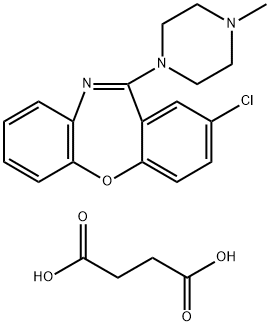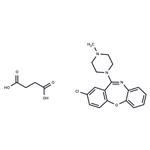Loxapine was first developed in the late 1960s and was introduced
into clinical practice in the following decade. It is used
primarily to treat the psychotic symptoms of schizophrenia.
It is a member of the dibenzoxazepine class and is structurally
related to clozapine. The introduction of newer antipsychotic
agents has resulted in the reduced utilization of loxapine over
the last few decades.
Loxapine is an atypical antipsychotic drug that displays high affinity for histamine, 5-HT, dopamine, and α1-adrenergic receptors (Ki values are 7, 7.7, 9.5, 12, and 31 nM for H1, 5-HT2A, 5-HT2C, D2, and α1A, respectively). It reduces agitation associated with schizophrenia or bipolar disorder.
Loxapine is used to treat and control the psychotic symptoms
of both acute and chronic schizophrenia. Other uses include
treatment of dementia, anxiety neurosis, hostile/aggressive
behavior, and psychotic depression. An inhalation powder of
loxapine (Adasuve�) was recently approved in the United
States and the European Union for the acute management of
agitation in patients with bipolar disorder or schizophrenia.
A D2/D4-Dopamine receptor antagonist. A serotonergic receptor antagonist. A dibenzoxazepine antipsychotic agent
Loxapine (Mylan); Loxitane (Watson).
Loxapine has antagonistic action on alpha1 adrenergic,
muscarinic, serotonergic, and dopaminergic receptors. It is
thought to change the level of excitability in subcortical
inhibitory areas of the brain by reducing the firing threshold
of some polysynaptic neurons leading to seizure activity.
Anticholinergic effects are also reported with loxapine
intoxication.



